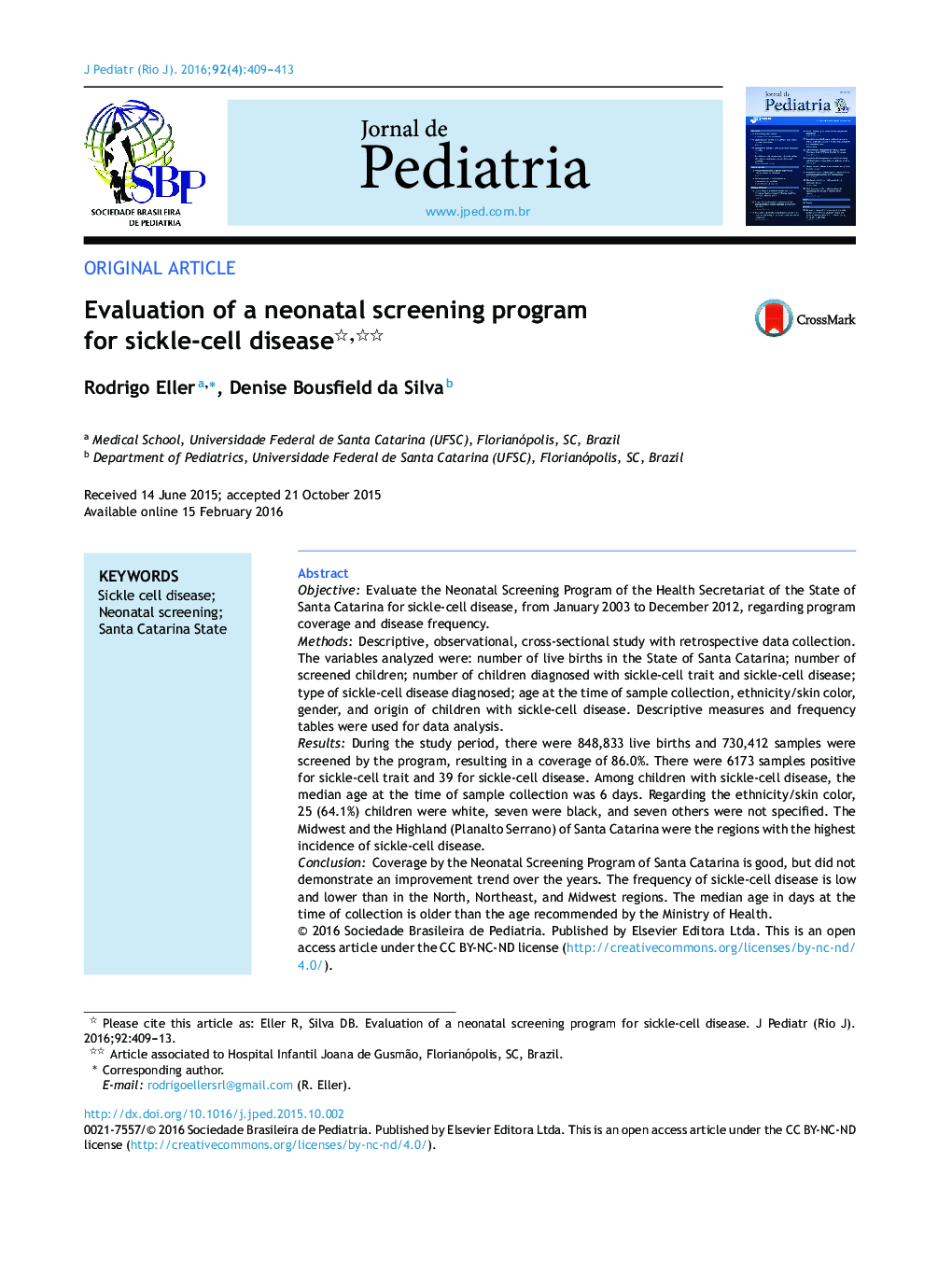| Article ID | Journal | Published Year | Pages | File Type |
|---|---|---|---|---|
| 4153811 | Jornal de Pediatria | 2016 | 5 Pages |
ObjectiveEvaluate the Neonatal Screening Program of the Health Secretariat of the State of Santa Catarina for sickle-cell disease, from January 2003 to December 2012, regarding program coverage and disease frequency.MethodsDescriptive, observational, cross-sectional study with retrospective data collection. The variables analyzed were: number of live births in the State of Santa Catarina; number of screened children; number of children diagnosed with sickle-cell trait and sickle-cell disease; type of sickle-cell disease diagnosed; age at the time of sample collection, ethnicity/skin color, gender, and origin of children with sickle-cell disease. Descriptive measures and frequency tables were used for data analysis.ResultsDuring the study period, there were 848,833 live births and 730,412 samples were screened by the program, resulting in a coverage of 86.0%. There were 6173 samples positive for sickle-cell trait and 39 for sickle-cell disease. Among children with sickle-cell disease, the median age at the time of sample collection was 6 days. Regarding the ethnicity/skin color, 25 (64.1%) children were white, seven were black, and seven others were not specified. The Midwest and the Highland (Planalto Serrano) of Santa Catarina were the regions with the highest incidence of sickle-cell disease.ConclusionCoverage by the Neonatal Screening Program of Santa Catarina is good, but did not demonstrate an improvement trend over the years. The frequency of sickle-cell disease is low and lower than in the North, Northeast, and Midwest regions. The median age in days at the time of collection is older than the age recommended by the Ministry of Health.
ResumoObjetivoavaliar o Programa de Triagem Neonatal da Secretaria de Saúde do Estado de Santa Catarina (PTN-SES/SC) para doença falciforme no período de janeiro de 2003 a dezembro de 2012, em relação à sua cobertura e à frequência da doença.Métodosestudo descritivo, observacional e transversal com coleta retrospectiva dos dados. As variáveis analisadas foram: número de nascidos-vivos no Estado de Santa Catarina; número de crianças triadas; número de crianças diagnosticadas com traço e doença falciforme (DF); tipo de DF diagnosticada; idade da coleta, cor/raça, sexo e procedência das crianças com DF. Foram utilizadas as medidas descritivas e as tabelas de frequência para análise dos dados.Resultadosno período estudado, houve 848.833 nascidos-vivos e 730.412 amostras triadas pelo programa, gerando cobertura de 86,0%. Das amostras triadas, foram encontradas 6.173 crianças com traço falciforme e 39 com DF. Entre as crianças com DF, a mediana da idade em dias na data da coleta foi de 6. Das 39 crianças doentes, 25 (64,1%) eram da cor/raça branca, 7 da negra e 7 de outra cor/raça. As regiões do planalto serrano e do meio-oeste de Santa Catarina foram as regiões com maior incidência de DF.Conclusõesa cobertura do PTN-SES/SC é boa, contudo não apresentou tendência de melhora ao longo dos anos. A frequência da DF é baixa e menor que nas regiões Norte, Nordeste e Centro-oeste. A mediana da idade em dias no momento da coleta está acima do preconizado pelo Ministério da Saúde.
